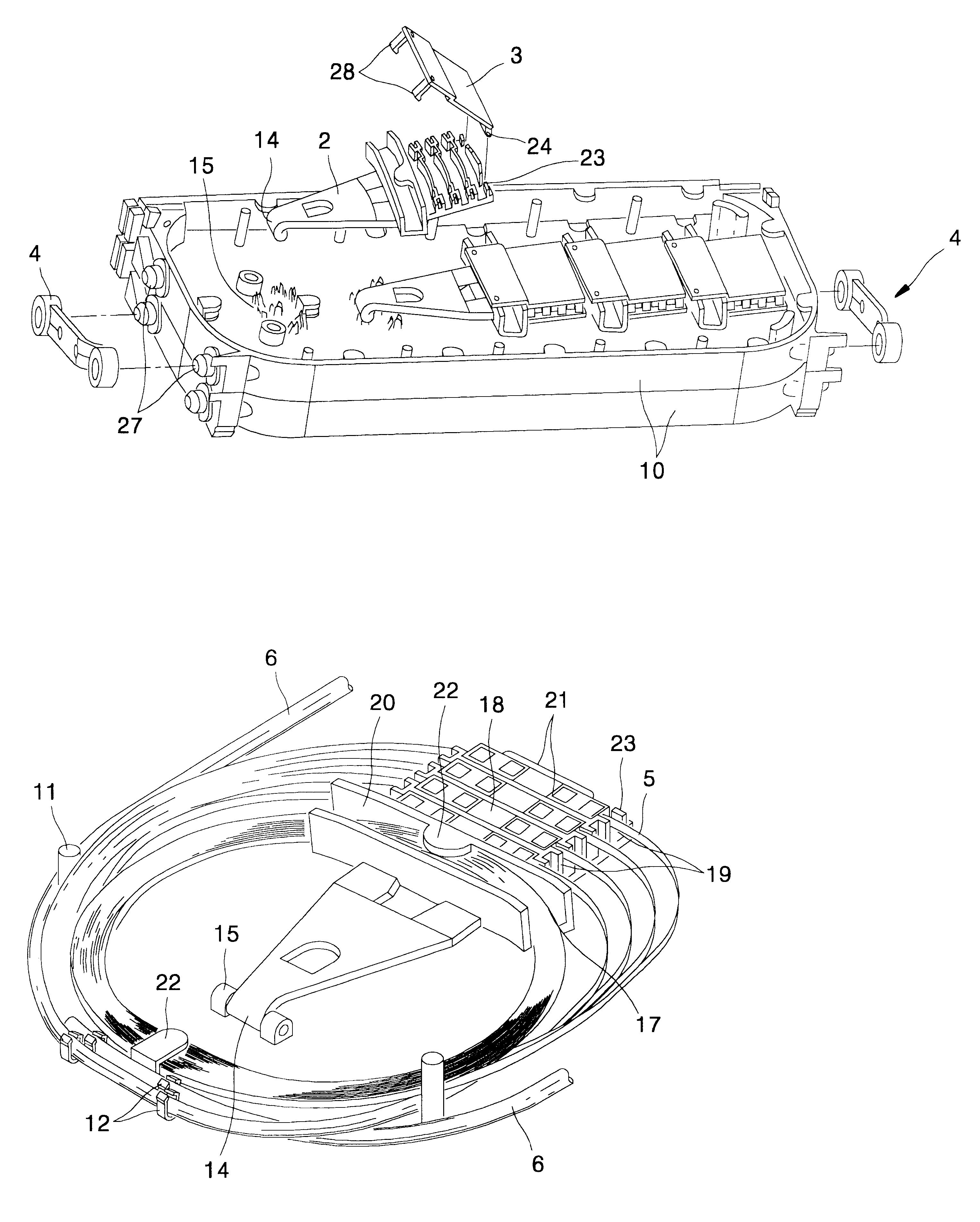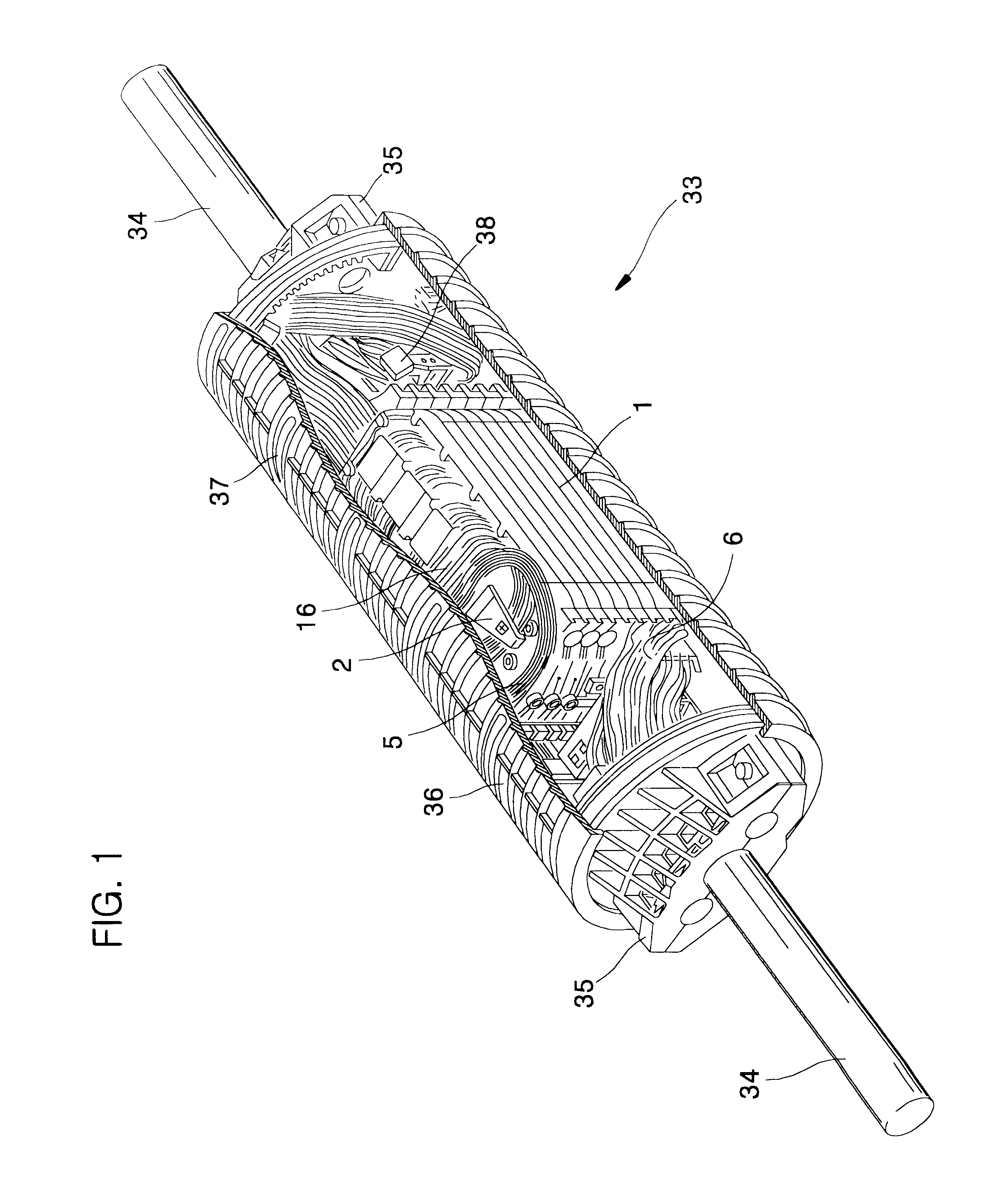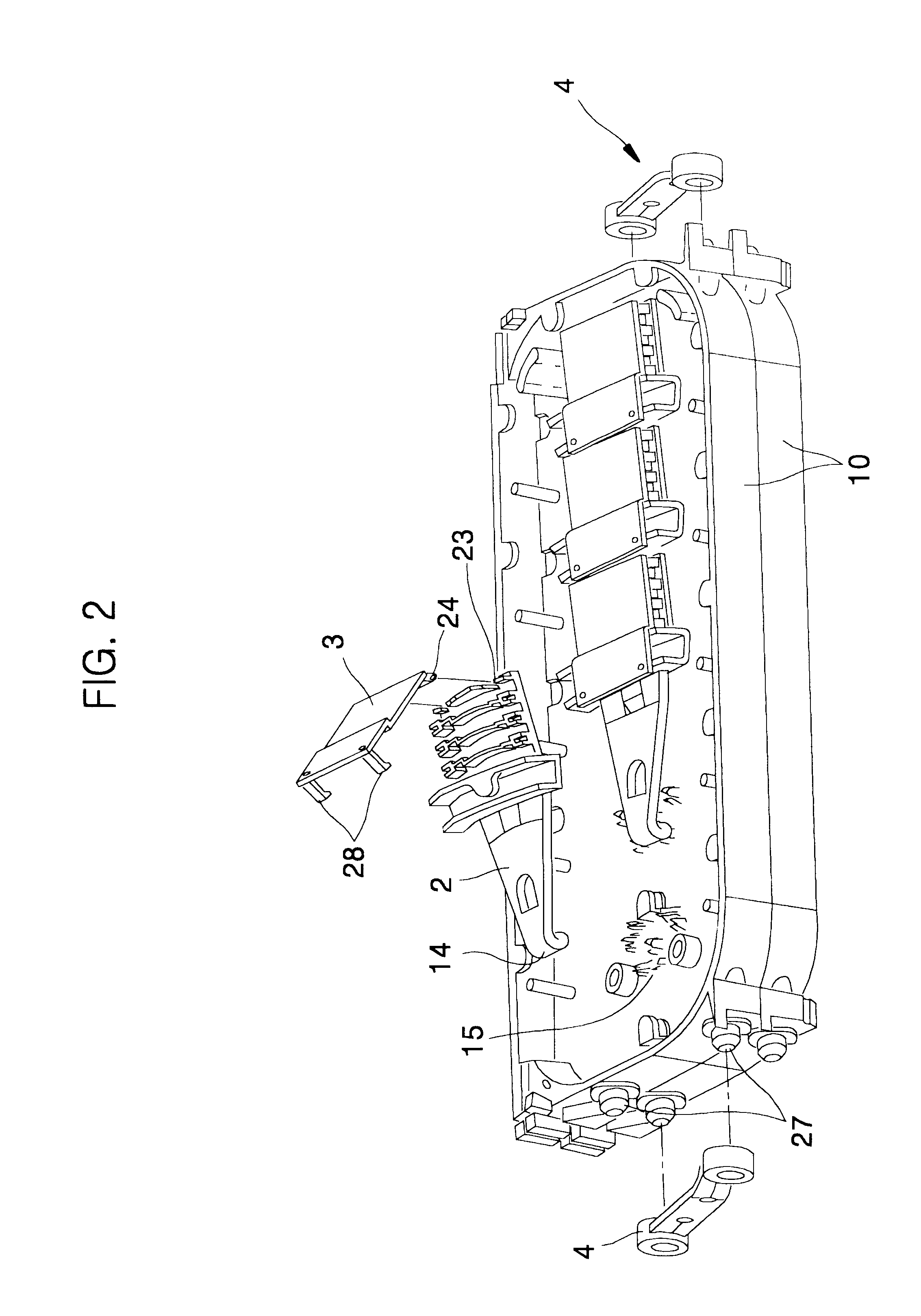Tray for splicing optical ribbon fibers
a technology of optical ribbon and splicing fiber, which is applied in the direction of optics, fibre mechanical structures, instruments, etc., can solve the problems of difficult to fix the splice and arrange the excess length in a single plane, and the inability to use the single optical fiber for the optical ribbon fiber,
- Summary
- Abstract
- Description
- Claims
- Application Information
AI Technical Summary
Benefits of technology
Problems solved by technology
Method used
Image
Examples
Embodiment Construction
Hereinafter, the embodiment according to the present invention will be described in detail, referring to the drawings.
FIG. 1 is a perspective view showing an splice closure for optical ribbon fiber cable disposing trays for splicing optical ribbon fibers according to the present invention, with a part cut off.
As shown in FIG. 1, the optical ribbon fiber cables 34 are inserted into an splice closure 33 through each endcap 35 positioned in both ends of the splice closure 33. Further, the splice closure 33 has a plurality of trays for containing and protecting the optical ribbon fibers and splices therein. In this case, the tray main body 1 is positioned between the both endcaps 35, and then be fixed by a tension member holder 38 and a clamping bar firmly. The optical ribbon fiber cables 34 inserted in the splice closure 33 are stripped off their sheathes, and then their tension members are fixed in the tension member holder 38. In this case, the optical ribbon fiber 5 is inserted into...
PUM
 Login to View More
Login to View More Abstract
Description
Claims
Application Information
 Login to View More
Login to View More - R&D
- Intellectual Property
- Life Sciences
- Materials
- Tech Scout
- Unparalleled Data Quality
- Higher Quality Content
- 60% Fewer Hallucinations
Browse by: Latest US Patents, China's latest patents, Technical Efficacy Thesaurus, Application Domain, Technology Topic, Popular Technical Reports.
© 2025 PatSnap. All rights reserved.Legal|Privacy policy|Modern Slavery Act Transparency Statement|Sitemap|About US| Contact US: help@patsnap.com



